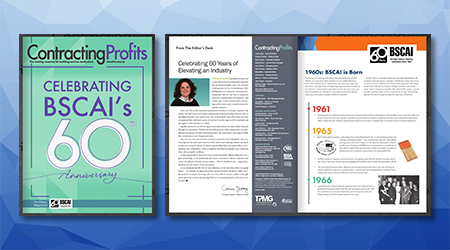
One of the biggest challenges distributors face when managing a multigenerational salesforce is adapting to each age group’s learning style, particularly when trying to train and educate the younger generations.
“Gen Z struggles with deeper product knowledge, unless it’s bite-sized and engaging,” notes Cowan. “You can’t sit Gen Z down for a four-hour seminar about your products.”
When it comes to learning and retaining information, TikTok reels and YouTube videos fit the bill for Generations Y and Z. Millennials also prefer interactive mobile-based learning and respond well to gamified training platforms. On the customer side, many will want social proof in the form of company reviews, photos and video testimonials.
Wendover recommends inviting salespeople to produce a video internally — not only to learn about the company and its products, but to explain the distributor’s business model to potential customers.
“People have to live this stuff; they can’t just live it abstractly,” he says. “Have an employee make a video and let that person walk around the company or go to a vendor plant and interview people. Generally, that’s more fun and of greater value than spending $10,000 to have a production company do the same thing.”
Similarly, Cowen recommends having younger salespeople use janitorial products in the field before selling them. This may also be an opportune time for experienced Baby Boomers to share their knowledge with the younger generations in person — provided they keep it short and engaging.
Unlike Generations Y and Z, Baby Boomers — and to an extent, Gen X — favor structured training, workshops and face-to-face demos to learn about products. Distributors should also evaluate their websites and ensure that they are user-friendly — not only as a vehicle for selling, but for educating customers and salespeople across generations.
“A Boomer might spend 15 to 20 seconds trying to find something on a website, while someone in their 20s might spend three seconds. If the site is not intuitive, you lose,” says Wendover. “It also needs to be optimized for smart phones because young people do a lot of shopping, perusing and research on a handheld device.”
The Power of Dialogue
According to experts, fostering open communication among employees and customers of all ages is essential for addressing misconceptions and bridging the divide between generations.
One of the common stereotypes of Gen Z is that they are lazy and lack a strong work ethic. St. John believes it is more likely that they are misunderstood. She recalls attending a conference where business owners questioned a panel of college students and were surprised to learn how receptive they were to the traditional workforce.
“I think a lot of business owners assume Gen Z prefers digital interactions to [real life], but in fact, that’s not true,” she says. “Some may be that way, but many crave interpersonal connections. Yes, they are digital natives, but don’t assume that means they don’t want human interactions.”
Just as a distributor sales team evolves from a generational standpoint, so does their customer base — and Gen Z may now (or soon will) be their clients. St. John encourages businesses to lean into these differences and reach out to their Gen Z employees for insights.
“Ask them how they would use social media to promote the business,” she says. “Have them look at the company messaging and find out what resonates with them. Eventually, they’re going to be the majority of the workforce, so these are opportunities to supplement traditional sales channels and marketing strategies.”
Building and maintaining relationships across the generational divide is a two-way conversation. Experts urge distributors to be eager to interact with those of different generations.
“Be intentional in the sense of reaching out to people in other generations. They don’t bite,” says Wendover. “And be curious. The question I use all the time is ‘how did you get into this?’”
Wendover shares that given a choice between sitting in a room with his peers and sitting in a room with 20-somethings, he would pick the 20-somethings.
“They’re much more interesting, because they know stuff I don’t know, and they have attitudes I don’t know about,” he says.
To start the dialogue, he recommends distributors have their sales team get together weekly for 15 to 20 minutes and share one challenge that they struggled with during the week.
St. John suggests a more lighthearted approach.
“Find something fun that’s not too pejorative — a TikTok, keynote, or article — and celebrate those generational differences so that real conversations can happen around it,” she says.
Classroom training is another viable option. Cowan, who offers training classes in generational differences for salespeople, advocates at least a half-day of training that includes role-playing.
“We find in most cases those who are 35 and under cannot carry on a conversation that isn’t digitally oriented,” she says. “They need training on how to talk to a 60-year-old and then practice selling them something. Because if your customer says, ‘Why should I pick you,’ you better have an answer for them.”
No matter a distributor’s approach, effective communication and dialogue are paramount in bridging the generational gap and maximizing sales.
Kassandra Kania is based out of Charlotte, North Carolina, and is a frequent contributor to Sanitary Maintenance.
How to Make the Most of a Multigenerational Sales Team

 Celebrating BSCAI's 60th Anniversary eBook
Celebrating BSCAI's 60th Anniversary eBook The Down and Dirty on Cleaning in Virus Season
The Down and Dirty on Cleaning in Virus Season How Surfactant Use is Expanding in Commercial Cleaning
How Surfactant Use is Expanding in Commercial Cleaning